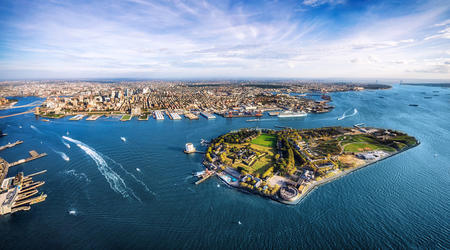Tell us about SOM’s journey to a net zero future
As a global interdisciplinary firm, we are channeling our expertise and resources towards achieving a zero carbon future. We were among the first design and engineering firms to join the World Green Building Council’s Net Zero Carbon Buildings Commitment, and we continue to evolve our strategies aimed at reducing emissions across global operations.
Last year, SOM became a net zero emissions business with carbon reduction and offsets. Our sustainability commitments begin in the workplace. In addition to pledges including the AIA 2030 Commitment, the China Accord, MEP2040 and the SE2050 Commitment, we also target net zero operational carbon for our projects by 2030 and net zero whole life carbon by 2040.

Why did SOM decide to join Climate Group’s EP100 program?
We believe in the power of collaboration, research, and innovation. We’re committed to working with the wider industry and our clients to continue to advance sustainability. Our collective efforts and collaborations have enabled us to strengthen our relationships and advance our commitment towards a carbon neutral future.
“In the built environment, we must design for the 3Ds: Design for net zero carbon today, design for the changing climate of tomorrow, and design for resilient communities. As a net zero business, SOM is committed to a carbon neutral future. As a member of EP100 we collaborate with our industry, other EP100 members and beyond to strengthen sustainability in the building profession.”
- Yasemin Kologlu, Design Principal at Skidmore, Owings & Merrill (SOM)
What are some SOM projects that are advancing the pursuit of a carbon neutral future?
Recently, we announced our design for a dynamic public-facing campus dedicated to exploring sustainable innovation and solutions to the quandaries of climate change. The New York Climate Exchange, located on Governors Island in New York City, will be the first-of-its-kind international center for developing solutions to the climate crisis. Targeting net zero in energy, water, and waste, the project will add 4.5 acres of new outdoor public space, create 230,000 square feet of new buildings, and repurpose another 170,000 square feet of the island’s historic architecture.
The project also aims to become the first in New York City to achieve the Living Building Challenge standard. Geothermal systems and adaptive reuse will be additional hallmarks of the complex, as will a wetland designed by SOM to help diffuse incoming tides and mitigate inundation.
Our commitment to research and collaboration, through programs like EP100, has helped us design concepts that dare to introduce an altogether new standard of what we previously thought possible in sustainable design. We’re asking revolutionary questions: what if buildings could act like trees—capturing carbon, purifying air, and regenerating the environment?
Urban Sequoia is a holistic design concept that’s applicable to any building type at any scale. It enables building projects to achieve net zero whole life carbon within five years and absorb more than 300% of carbon over the course of a 100-year lifespan through consolidation and elimination of numerous building materials and systems. Taking inspiration from nature, Urban Sequoia reimagines buildings as a climate solution—it sets the stage for a new generation of carbon absorbing buildings and a low carbon future for cities.